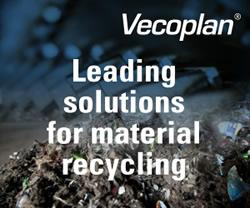ROLLING OUT SMART INVERTERS
EPRI-SEPA WHITE PAPER HIGHLIGHTS UTILITY DEPLOYMENTS
WASHINGTON, DC (Nov. 4, 2015) - The Solar Electric Power Association (SEPA) and the Electric Power Research Institute (EPRI) have released a new white paper, "Rolling Out Smart Inverters," that provides an overview of how four U.S. utilities are piloting this advanced technology. Specifically, the paper examines technical and business considerations for using smart inverters to facilitate the broader adoption of solar and other distributed energy resources (DERs).
A core component of all photovoltaic (PV) solar systems, inverters take the direct current generated by PV panels and turn it into the alternating current that powers todays electricity systems. Advanced or "smart" inverters go beyond this basic functionality, ensuring electric system reliability by responding to real-time signals from the grid to modulate output depending on how much power is needed.
"This report underlines the central role utilities can and must play in the deployment of solar and other advanced, distributed technologies, such as smart inverters and storage," said Julia Hamm, president and CEO of SEPA. "These forward-looking companies are exploring the limits of our existing grid, while also ensuring reliability and developing new partnerships and solutions that will benefit both residential and utility-scale solar markets. Equally important, they are providing models that will help other utilities stay ahead of the unfolding transformation of our energy system."
The white papers key conclusions:
· Utilities are evaluating the potential for smart inverters to provide grid support. Smart inverters can, for example, provide voltage and frequency support, adjusting their output to balance frequency or voltage changes. But technical standards are lagging. Pacific Gas and Electric and other California utilities are working with a stakeholders group convened by state regulators to update key interconnection regulations, called Rule 21, to support smart inverter functionality and increase deployment of distributed solar.
· Inverter retrofits can be done cost-effectively. The solar industry-utility partnership behind Hawaiian Electric Companys 800,000-inverter upgrade demonstrates that inverter retrofits can be managed for cost and efficiency. Such upgrades could also allow the deployment of some grid-support functions at low costs.
· Upgrading communications systems to connect smart inverters with utilities data management systems will be critical but expensive. Arizona Public Service and the Salt River Project have pilot projects aimed at developing such communications systems, but regional differences in grid operations will require flexible strategies for deploying smart inverters.
"Integrating solar and other DERs brings new dynamics and new challenges to the grid, requiring smart devices, connectivity, and an understanding of the inherent benefits and costs associated with the technology," said Mark McGranaghan, vice president of power delivery and utilization at EPRI. "This paper signals that smart inverters can serve an important technical function in optimally integrating the grid --- and these more dynamic, distributed resources."
The Executive Summary of the report is attached. For a full copy, contact K Kaufmann at kkaufmann@solarelectricpower.org
Featured Product

Vecoplan - Planning and implementation of complete processing plants in refuse derived fuel production
In order to reduce the costs involved in the energy-intensive production of cement, many manufacturers are turning to refuse-derived fuels (RDF), considerably reducing the proportion of expensive primary fuels they would normally use. Solid fuels are being increasingly used - these might be used tyres, waste wood or mixtures of plastics, paper, composite materials and textiles. Vecoplan provides operators of cement plants with proven and robust components for conveying the material and separating iron and impurities, efficient receiving stations, storage systems and, of course, efficient shredders for an output in various qualities.
